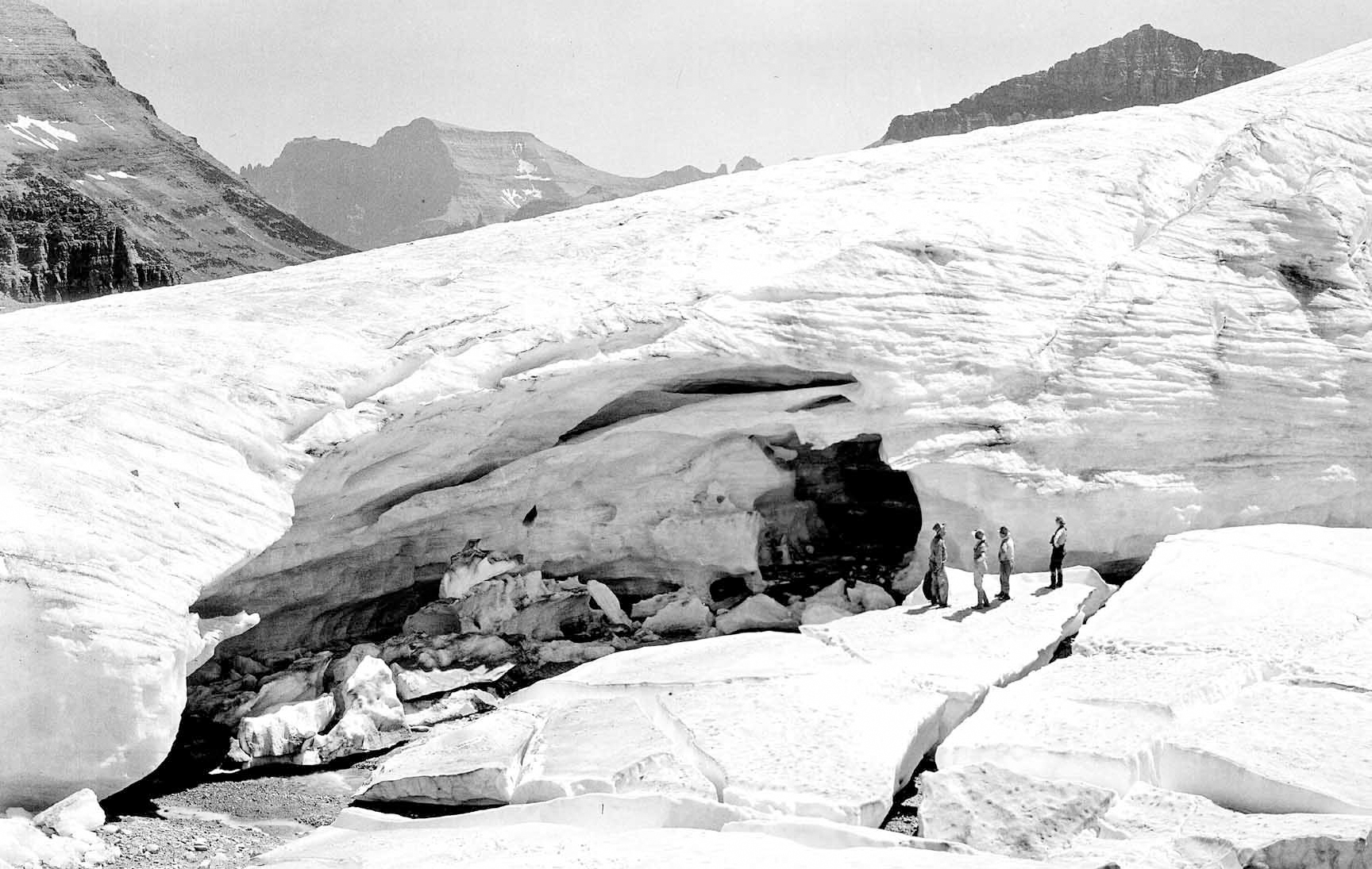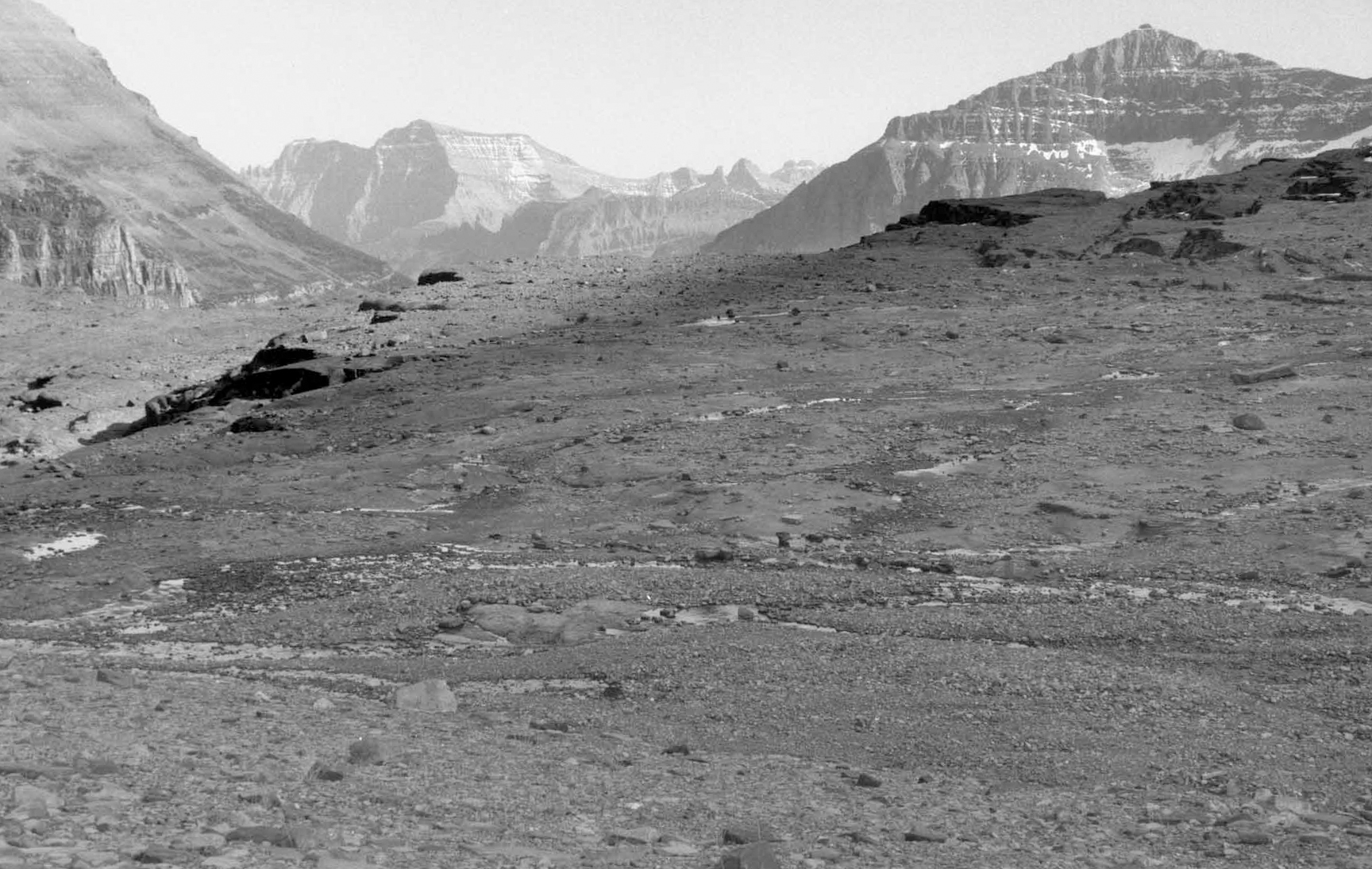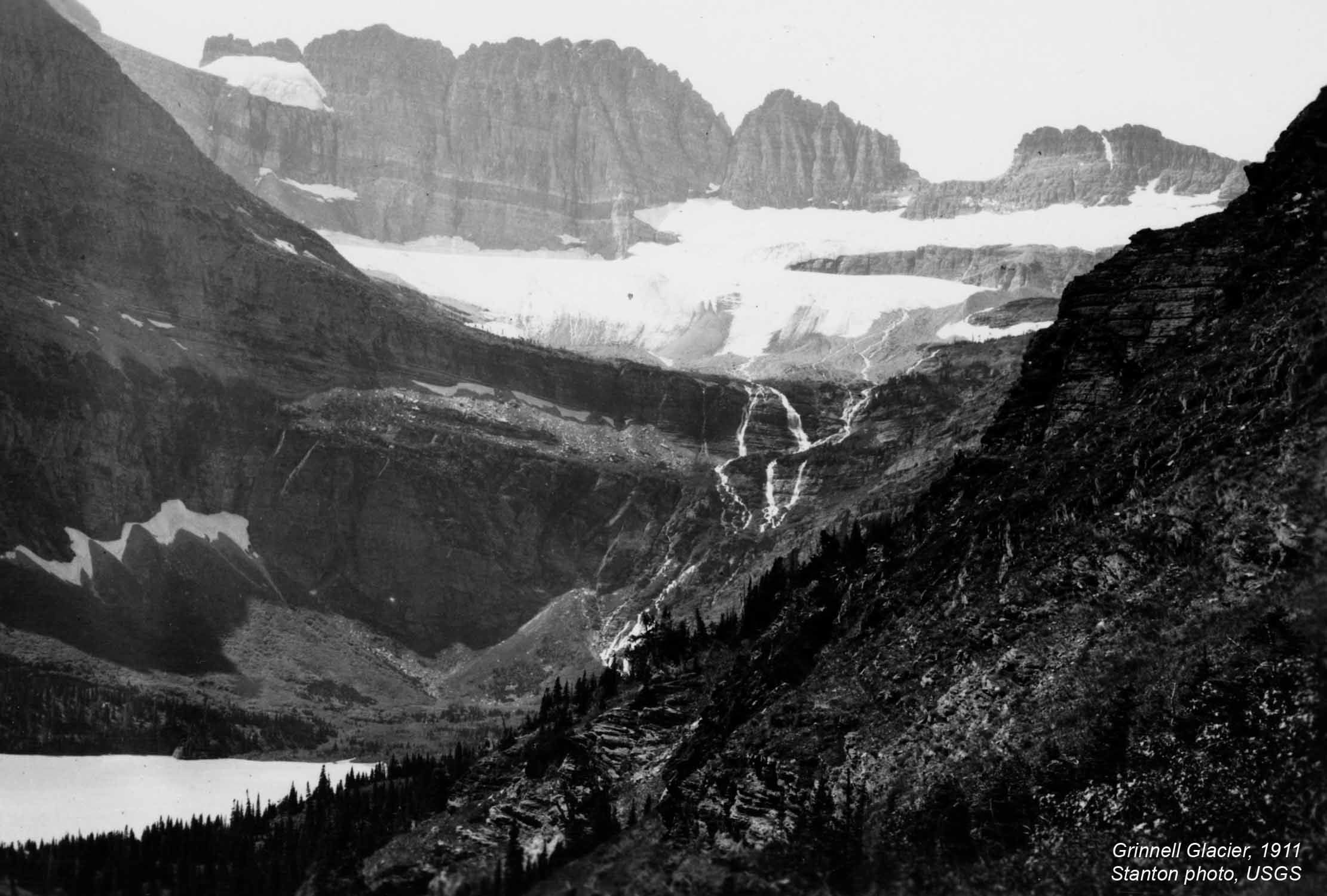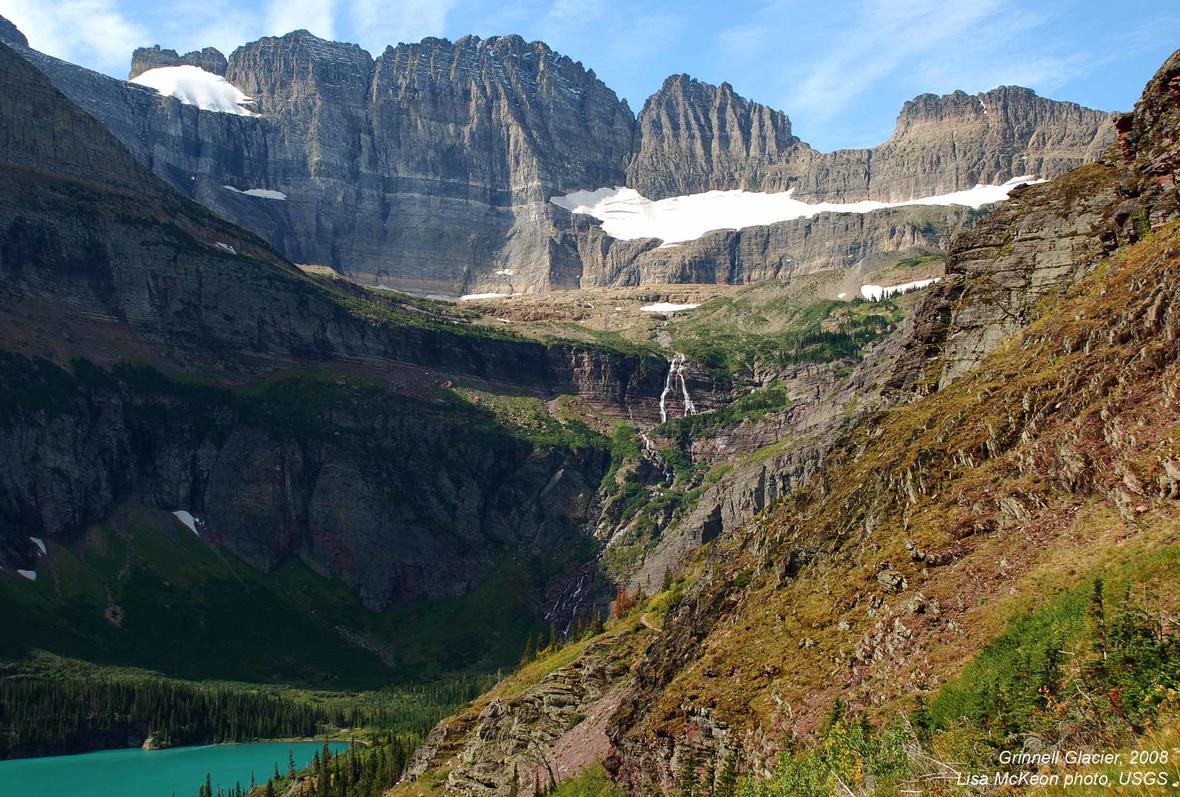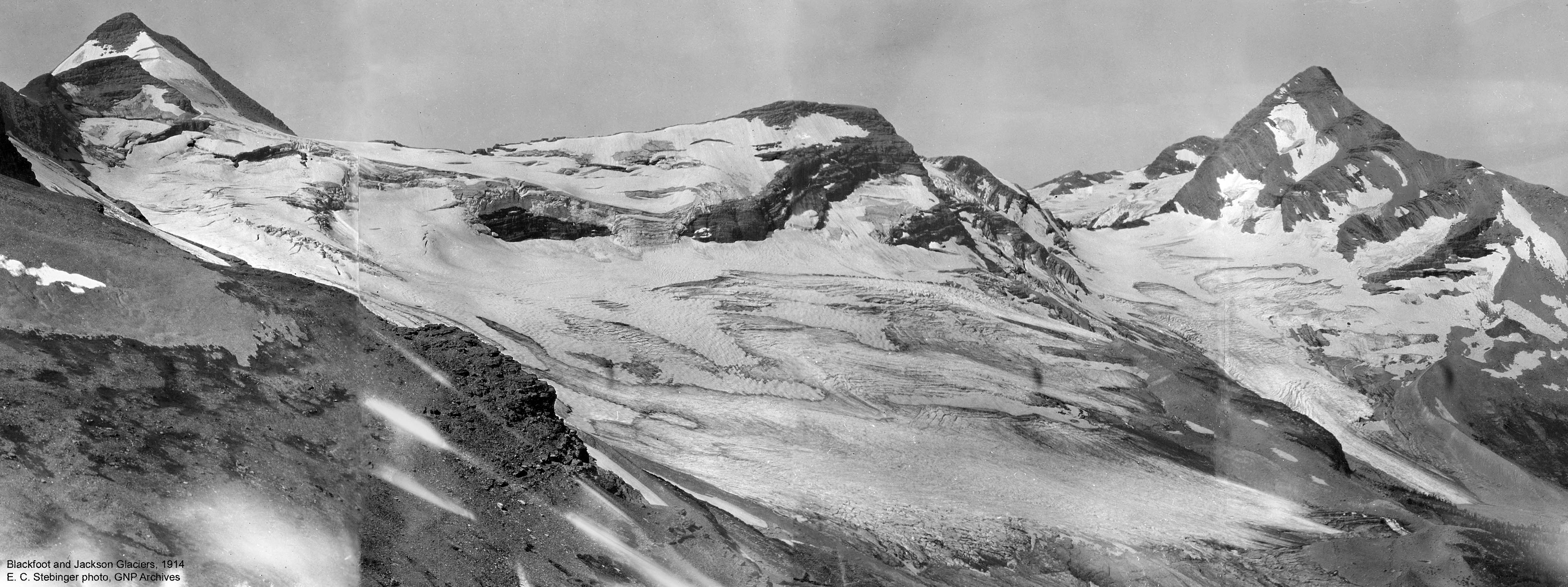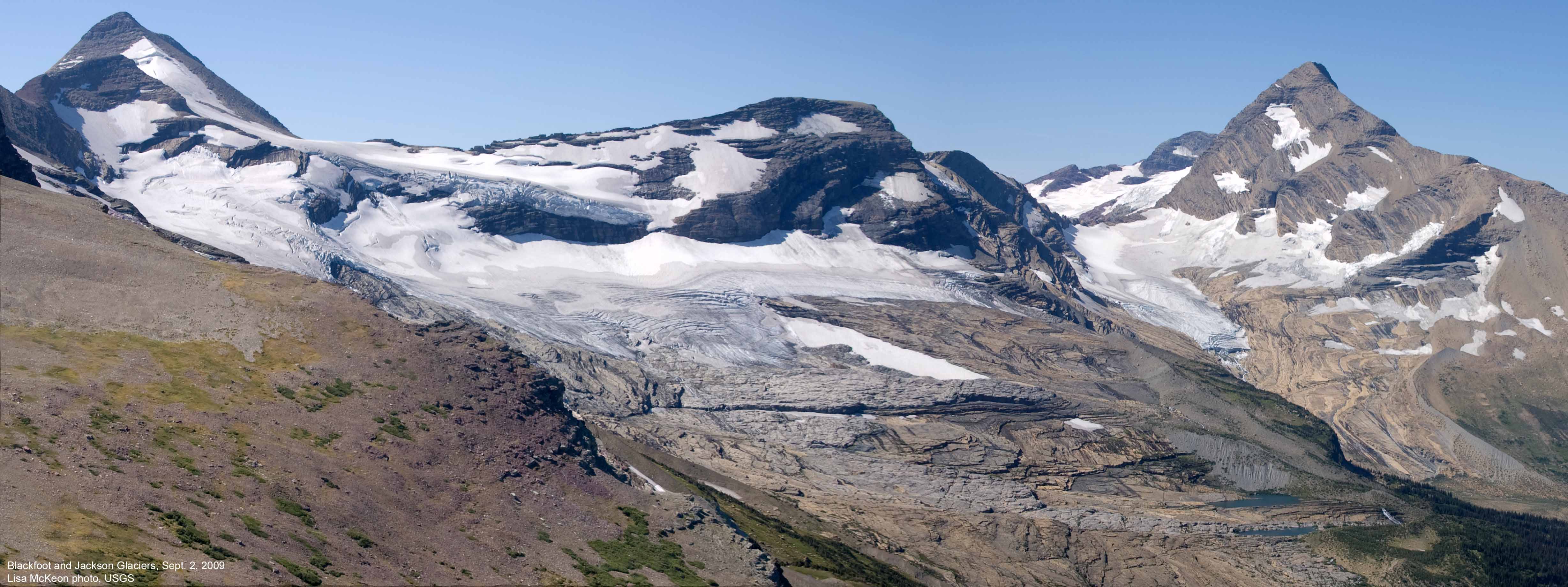By Brian Kahn
August 3, 2016
National Parks have grown up with photography. So it’s only fitting that in the last days of ice in Montana’s Glacier National Park, Lisa McKeon is using a camera to show how quickly climate change has killed off the park’s namesakes.
After all, it’s one thing to note that of the park’s 150 glaciers that existed in the late 1800s, only 25 of them remain today. But it’s another to see what that cold, hard fact looks like on the landscape.
For nearly 20 years, McKeon, a U.S. Geological Survey biologist, has prowled dusty archives to find old photos showing the splendor of the park’s glaciers in decades past. Those images have taken her to bushwhacking through the forest and to the highest reaches of the park so she can recreate those images.
Put the old and the new images side-by-side and it’s impossible to ignore the visual evidence of how rapidly climate change has eaten away at the ice.
“These photos really resonate with people,” McKeon said. “When we first started taking them years ago, people kept asking for more. That first summer was spent filling media requests.”
Soon there will be no glaciers left for McKeon to photograph. Scientists project that Glacier’s ice could disappear completely in just 15 years.
This, more than anything, is the most visceral impact of climate change across the National Park Service — or the world for that matter. Rising seas, changing weather patterns and disappearing species will become more pressing as the planet continues to warm. But for these glaciers, this is the end of the road and it couldn’t be more obvious to the human eye or camera lens.
Soon all that will be left are images like the ones McKeon is capturing now, which will endure as a searing testament to the changes humans have wrought to one of the most beautiful places on earth.
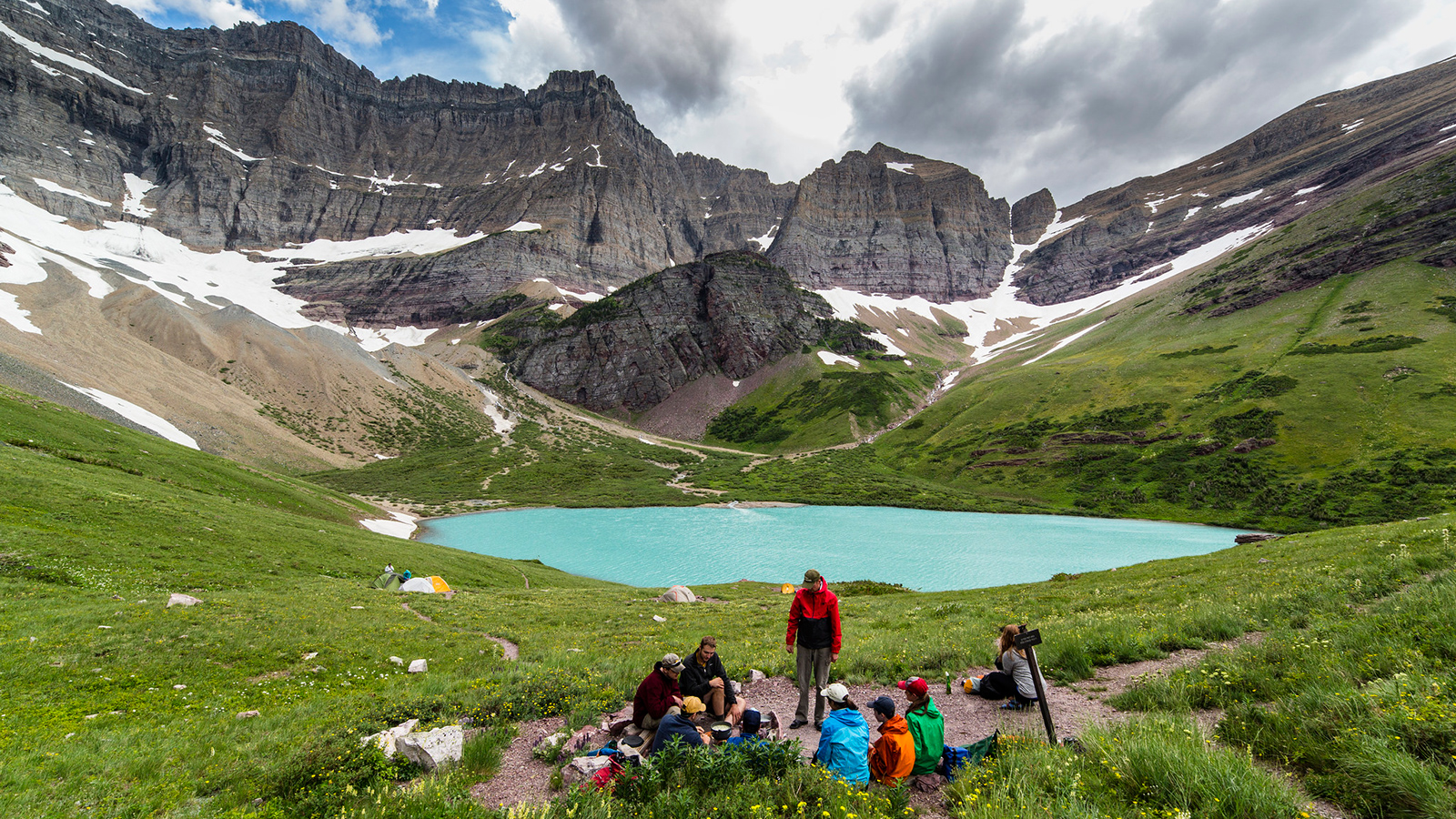
Park visitors eating dinner at Cracker Lake, a glacial-fed lake in Glacier National Park's backcountry. Credit: Jacob Frank/National Park Service
People have been coming to this rugged corner of northwest Montana and documenting their visits from behind the lens for more than a century. The photographic technology has changed from glass plate negatives to film to digital, but the urge to capture and share this spectacular landscape hasn’t.
“You can talk all you want about how beautiful this place is, but show someone a picture and then it’s crystal clear how amazing it is,” Jacob Frank, a ranger at Glacier and the park’s semi-official photographer, said.
Glacier National Park is an area of pristine wilderness, 1 million acres of breath-taking beauty that’s at the center of the Crown of the Continent Ecosystem that spans 10 million acres on either side of the U.S.-Canada border. The park is flush with grizzly bears, mountain goats, wildflower meadows, and rushing rivers. But its namesake glaciers have always been the centerpiece of one of the National Parks Service’s best known parks.
And all those stunning photos through the years have lured more and more people to the park — it set a record when more than 2.3 million visited last year — to capture their own, but they’ve also given McKeon an opportunity to communicate the changes that are afoot.

Lisa McKeon taking a repeat photograph at Blackfoot Glacier in 2009.
Born and raised in Kalispell, Mont., a 45-minute drive from Glacier’s west entrance, this terrain is in McKeon’s bones. After working in Sequoia National Park for a few years in the 1980s, she returned to Glacier 19 years ago to help start a then-nascent effort to track climate change in the land of rock and ice.
What started as a gig doing snow surveys and installing weather stations quickly evolved into her current role as an ice detective. Archives at the park and University of Montana, as well as private collections, have yielded hundreds of historical photos documenting the 150 glaciers that populated the park in the early days. They stand as a testament to what the park once had.
The glaciers that hang off the high peaks and shaded slopes are the vestigial remnants of the Ice Age, a physical connection to deep time and the almost unimaginable forces that forged this landscape. But today is a new age, an era of global warming when human greenhouse gas emissions are causing the world to warm at a rate unseen in thousands of years. It’s an era that hasn’t been kind to ice in Glacier National Park and around the world.
Temperatures in the park have risen about 1.5°F since climate monitoring began in 1895. That rate of warming has really taken off since 1980 with the park warming about per 0.8°F decade since then. The amount of precipitation hasn’t changed, but more is falling as rain compared to snow.
Those forces are conspiring to deprive glaciers of the snow they need to grow, and instead, are speeding their summer melt, throwing the equation that’s allowed the glaciers to exist for centuries out of whack.
The majority of the park’s glaciers have already met a variety of untimely ends, disappearing completely or turning into stagnant snowfields. Some are hanging on as rock glaciers, essentially a zombie glacier buried under dozens of feet of rock that scientists are actively studying for clues about what’s next for alpine environments around the world.
Suffice to say, the 25 glaciers left in the park are on life support and eventually that life support is going to give out.
Even if humans were to stop emitting carbon dioxide today, there’s enough warming already cooked into the climate system to bring Glacier’s era of ice to an end. Projections indicate the remaining glaciers in the park are likely to be gone by 2030. Beyond that, climate change will continue to exert its influence on the landscape, as snowfields melt out earlier and a host of other changes trickle down from the high peaks to the valley below.
“The poster child of the National Park Service for climate change is Glacier National Park,” said Jonathan Jarvis, director of the National Park Service. “Those glaciers are the ice-box storage facilities for downstream flow and cooling the environment for trout and other species. (Losing them) is going to completely change that environment.”
McKeon’s mission to document those changes has taken her to follow the footsteps of her forebearers. Even for a researcher familiar with the science of disappearing glaciers, confronting the changes through images has provided a powerful reminder of what’s happening in the park and around the world.
She’s worn through many a pair of hiking boots trekking across the park’s expansive backcountry, seeing sites up close that most visitors will only catch from the side of the road or through a pair of binoculars. One of those treks took McKeon off the beaten trail, through huckleberry patches and slippery slopes covered in neon green moss to the foot of the Blackfoot Glacier. After a night camping at the glacier’s snout and listening to the sound of ice cracking and water rushing above her, McKeon set out to recreate a 1914 image taken by Eugene Stebinger, a USGS geologist who chronicled glaciers in the early days of the park.
Rising up the talus slopes of neighboring Almost-a-Dog Mountain, McKeon kept comparing the view in front of her to Stebinger’s old photo. When McKeon reached the right elevation, she then zeroed in on the precise location by looking for a flat area where someone would’ve plunked down a stack of glass plate negatives and clunky tripod and view camera.
Lining up the image exactly caused her to take pause. Blackfoot Glacier is the park’s second biggest and sits adjacent to Jackson Glacier. But both are shadows of their former selves. Well, self actually.
In Stebinger’s photo, the two glaciers are linked, crawling over the notch that separates Mount Jackson from Blackfoot Mountain and forming a massive plain of ice that covered 1,878 acres. Taking in the scene before setting up her digital SLR, McKeon realized her campsite the night before would have been under ice.
It’s these kinds of reminders that keep McKeon working on this project so that others can understand what climate change is doing to one of the country’s most beloved landscapes.
Because Glacier is iconic, sharing images of its disappearing ice has the power to change people’s perspective on climate change.
“I’ve taken one of my daughters to Grinnell Glacier,” McKeon said of the park’s most accessible and recognizable glacier. “My other daughter and I will go there this year. They’ll see it change dramatically and that’s inspired me to get them out.
“Along the terminus, it used to be that you would literally have to climb up it. Now it’s almost paper-thin margin of ice that wouldn’t support your weight.”
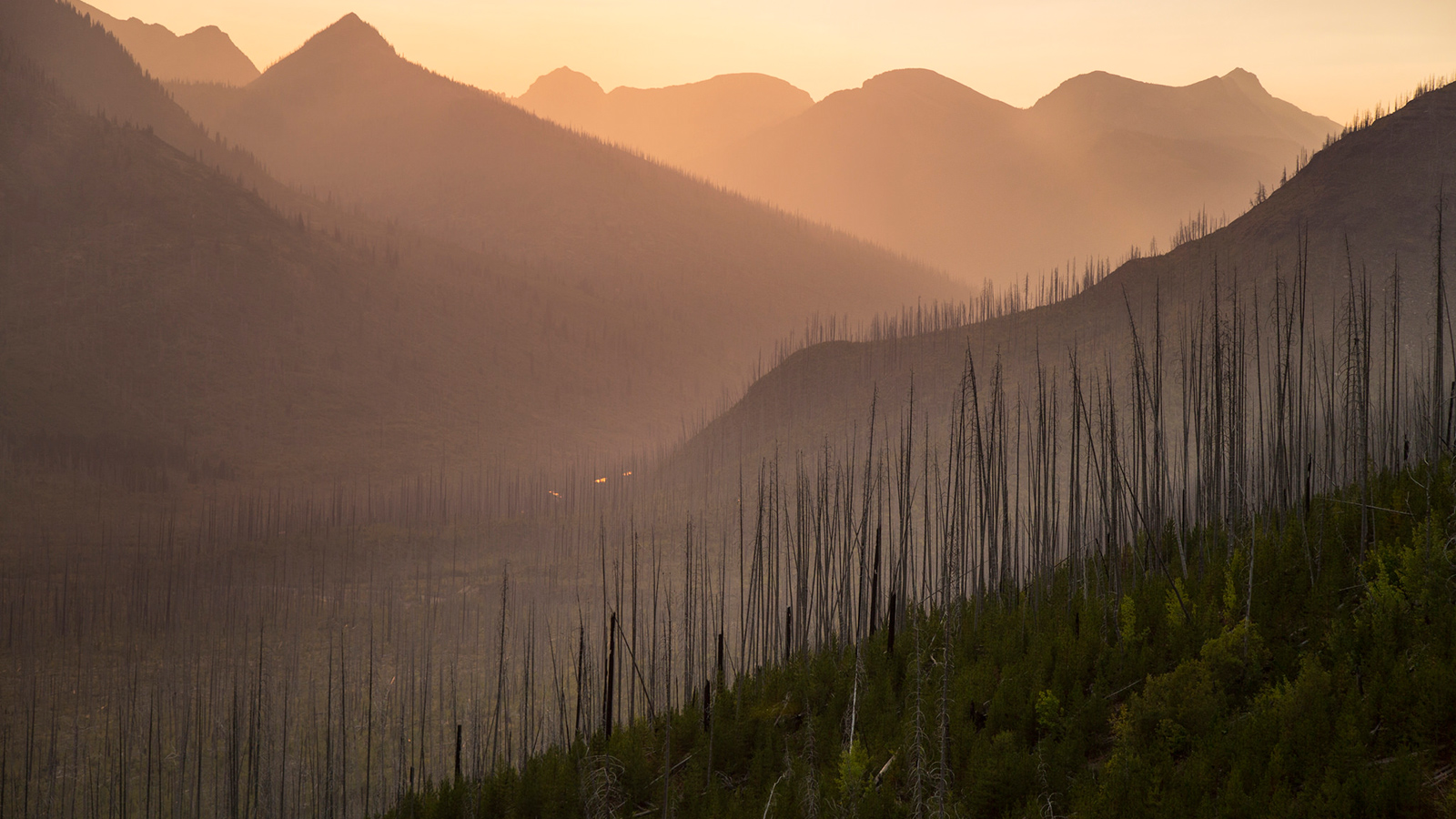
A hazy view through wildfire smoke from Going-to-the-Sun Road, the main road that cuts through the park. Bark beetle outbreaks, decreasing spring snowpack and rising temperatures have made large wildfires increasingly common in Glacier and throughout the West. Credit: Jacob Frank/National Park Service
What’s happening to the glaciers is only part of the climate change story in the park.
“The glaciers are icons of broader changes in the ecosystem,” Dan Fagre, a USGS scientist and McKeon’s boss, said. “That includes the fact that snowpack has declined over the past 50 years and melt out 2-3 weeks earlier than it used to. That’s helped cause fire frequency and severity to go up in the Northern Rockies. We have 76 extra days of fire season now.”
The most severe fire season on record in Glacier occurred in 2003 when 13 percent of the park’s 1 million acres lit up. And more broadly across the Northern Rockies, large wildfires are 10 times more common now than they were in 1970 and they burn 45 times more acreage than they used to.
Glacier’s high forests are also under threat of the pine bark beetle infestation. Without extreme winter cold to keep them in check, beetles have invaded trees in high-elevation forests. One of those trees is the whitebark pine, a tree found in Glacier and across the West’s alpine environments that has no natural defenses against bark beetles because it’s never had to defend against them. The devastation wrought by the beetles is one reason why the whitebark pine has been approved for listing under the Endangered Species.
Climate change is also cranking up the heat in streams and on the species that rely on cold water that the glaciers have dutifully provided in late summer. The western glacier stonefly is currently in the hot seat. Though it’s not exactly a warm and cuddly critter, it’s been affectionately labeled the “poster bug of global warming” and is only found in Glacier National Park. Without the cold flow of water from glaciers each summer, the western stonefly could follow Glacier’s ice into oblivion.
The slightly more charismatic (especially if you’re an angler) bull trout are also threatened by rising temperatures and the invasive lake trout that thrive in warmer waters.
The park is actively relocating some bull trout to cooler, higher-elevation streams cut off from invaders in the hopes of helping a native species survive. It’s one of the first assisted migration projects within the National Park Service domain, but it almost certainly won’t be the last in Glacier or across the entire system of parks.
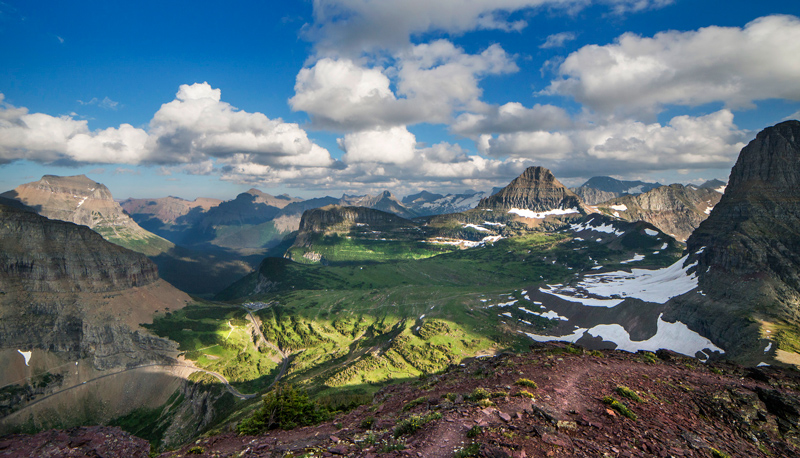
The view from the summit of Mount Oberlin. The Glacier National Park has a mandate to protect species from the top of the mountains to the bottom of the lakes.
Credit: Tim Rains/National Park Service
Glacier and other parks have a unique mandate and responsibility to preserve the wildlife within their borders (it’s right there in the Organic Act of 1916 that created the agency) and climate change means they’ll have to go to great lengths to do that as species are pushed to the brink by rising temperatures.
Even the visitation season itself could change. Earlier snowmelt and more temperate springs mean more and more park visitors are likely. National Park Service scientists project up to 45 percent more people could visit during the busiest three months of the year while shoulder season visitation could increase by 140 percent by mid-century.
That’s great for getting more pictures of Glacier on Instagram, but could create management challenges to have enough staff and infrastructure on hand to accommodate them.
What awaits all those newcomers to Glacier will be, well, different. McKeon, Fagre and others at the park have all said that even without ice, it will still be a wild and spectacular place. But there's no denying that it will lose a big part of what makes it special. If the glaciers serve as a reminder of the forces that have shaped the planet, their loss is a testament to how humans have changed it and the choices we have to make to protect what's left.
“The archival images are our history,” said Diane Burko, a painter and photographer whose work has focused on climate change in Glacier and elsewhere. “The whole point of civilization is to learn from our history. This is a visual, factual history. We can learn with our eyes.”
